HEP Plin Opens Office Building in Slatina
May 24, 2021 - The HEP Plin national gas provider opened a new office building in Slatina, an investment worth HRK 6.5 million, Croatia's national electricity provider (HEP) said on Monday, adding that it was continuing to develop its gas business.
The Slatina plant, one of HEP Plin's ten stations, employs eight workers, operates a distribution grid of 227 kilometers, and supplies 4,077 clients, of which 3,363 are households and 714 industrial consumers. In 2020, 86 million-kilowatt hours (kWh) of gas were delivered to consumers, HEP said in a press release.
HEP Plin, which is part of the HEP Group, manages 4,419 kilometers of gas networks in Osijek-Baranja, Požega-Slavonia, Virovitica-Podravina, Vukovar-Srijem and Krapina-Zagorje counties. It is the biggest distributor in Croatia in terms of the length of its gas grid. With almost 100,000 consumers, HEP Plin is one of the largest gas suppliers in the country.
For more news in Croatia, CLICK HERE.
EPIcentar Sequoia in Slatina to be 'Green Gates' of Slavonia
April 28, 2021 - EPIcentar Sequoia in Slatina aims to revitalize the protected natural heritage in the heart of the Slavonian town.
Did you know that the redwood tree (mammoth, sequoia) in Slatina is the only protected specimen of this species in Croatia? It was protected as one of the oldest natural monuments as early as 1967.
HRTurizam reports that the construction of EPIcentar Sequoia in Slatina aims to revitalize the protected natural heritage, redwood tree, and park located in the heart of Slatina, east of the City Hall, and increase the attractiveness of the whole site, and consequently increase the number of visitors, which will directly affect tourism development and encourage socio-economic development of the city and county.
Two buildings were reconstructed next to the mammoth. The first, larger one, has been turned into a visitor center: it consists of a reception area, reception and souvenir shop, office, and two multipurpose rooms for education and presentations, conference halls and service areas - restaurants with a capacity of up to 50 seats. In the basement, there is a kitchen and restaurant storage. In the attic of the building, there is a space to accommodate guests: a hostel with 32 beds in 8 rooms and a large living room from which a large window offers a view of the redwoods. Namely, there are currently no hotels in the city, so during important events, such as the Milka Kelemen International Music Festival, various music, scientific, economic, or religious gatherings, the problem of accommodating performers, participants, and visitors always arises.
It is important to point out that the souvenir shop will offer local entrepreneurs and student cooperatives products, which motivates the action and involvement of the community.
The second building has been reconstructed into a technically modern interpretation center. There is a space for receiving visitors, an office, and two multipurpose rooms for education and various workshops on the ground floor of the building. The central part of this building is the attic which serves as a space for visitors with a direct lookout to the redwoods. A permanent exhibition will be arranged within that space. Through a multimedia and interactive exhibition, the appearance of the natural heritage destination through history will be presented, emphasizing the sustainability of natural heritage.
A children's playground was built opposite the redwood. Gaming devices made of wood are integrated into the environment, and the youngest visitors can connect with nature and interact with the environment. The youngest will find themselves in this space because it is green and invites you to play, and adults can relax with a coffee in the restaurant during that time.
As part of this project, a mobile application was created that provides access to information about the park and the giant sequoia: it will contain a marked educational trail and data on the trees in the park, and a solar e-desk with interactive content, photo, and solar benches will be set up.
In addition to all these facilities, visitors will walk along an educational trail with boards that will educate about the natural and cultural-historical attractions of the protected park and redwood. Special tourist arrangements will be available to primary and secondary school students, people with disabilities, young people, and tourists who want an active stay in nature.
We want to attract as many visitors to this significant continental part of Croatia, which may have been too hidden so far, said the mayor of Slatina, Denis Ostrošić and added: "Good cooperation with the Health Center provides the possibility of rehabilitation, the natural environment the possibility of preparing athletes for various competitions, and the totality of the entire city center, including our museum and cinema with two screenings, and with our winemakers and winegrowers, shows that we are becoming a small destination with very nice content that will interest tourists of different orientations."
The general goal of this project is the sustainable management of public tourism infrastructure, which will increase its attractiveness, recognizability, and attendance and thus strengthen the potential of the natural heritage of continental Croatia.
Additional goals are indeed connecting with the important tourist locations of the county - with the Papuk Nature Park (25km), with the Drava story (20km), with the picnic area and Lake Orah, Orahovica (30km), to increase the destination potential and number of visitors and tourists.
EPIcentar Sequoia is opening its doors to all visitors this summer.
For more about lifestyle in Croatia, follow TCN's dedicated page.
Slatina Sparkling Wine Find Makes Slavonia Champagne Among Croatia's Oldest
February 13, 2021 – A newly discovered, fully preserved bottle of 'Slavonia champagne' is unique evidence that Slatina sparkling wine is among the oldest in Croatia. Its fascinating history stretches back over 150 years
A completely preserved Slatina sparkling wine bottle from the period from 1864 to 1912 has been discovered during building works of Slatina's new visitor's centre. Found at a depth of two metres, the bottle is physical proof of what was previously known only from records – this 'Slavonia champagne' is among the oldest sparkling wine to have been made in Croatia.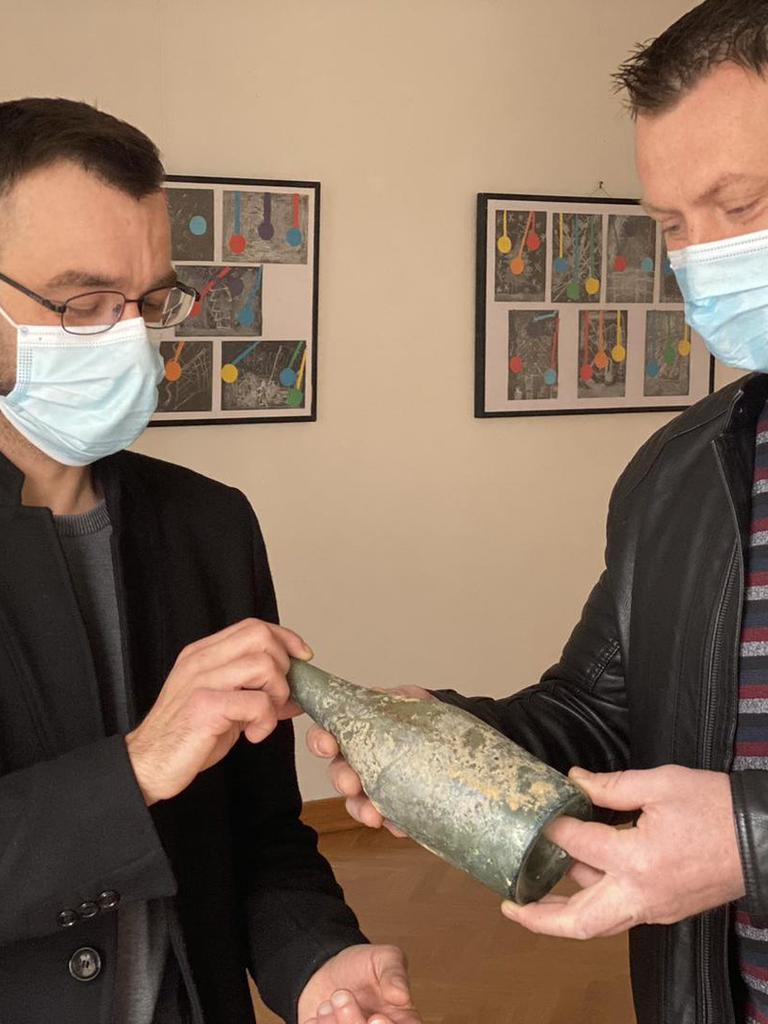 © Robert Turkalj
© Robert Turkalj
The discovery of the Slatina sparkling wine bottle is important to the city and its history. Other regions in Croatia have become extremely well regarded over recent years for their production of quality sparkling wines. The production of Slatina sparkling wine briefly disappeared during a period. But, this bottle is evidence that Slatina sparkling wine was among the first to be made in the country. It is the only fully preserved bottle of the 'Slavonia champagne' to exist in the region.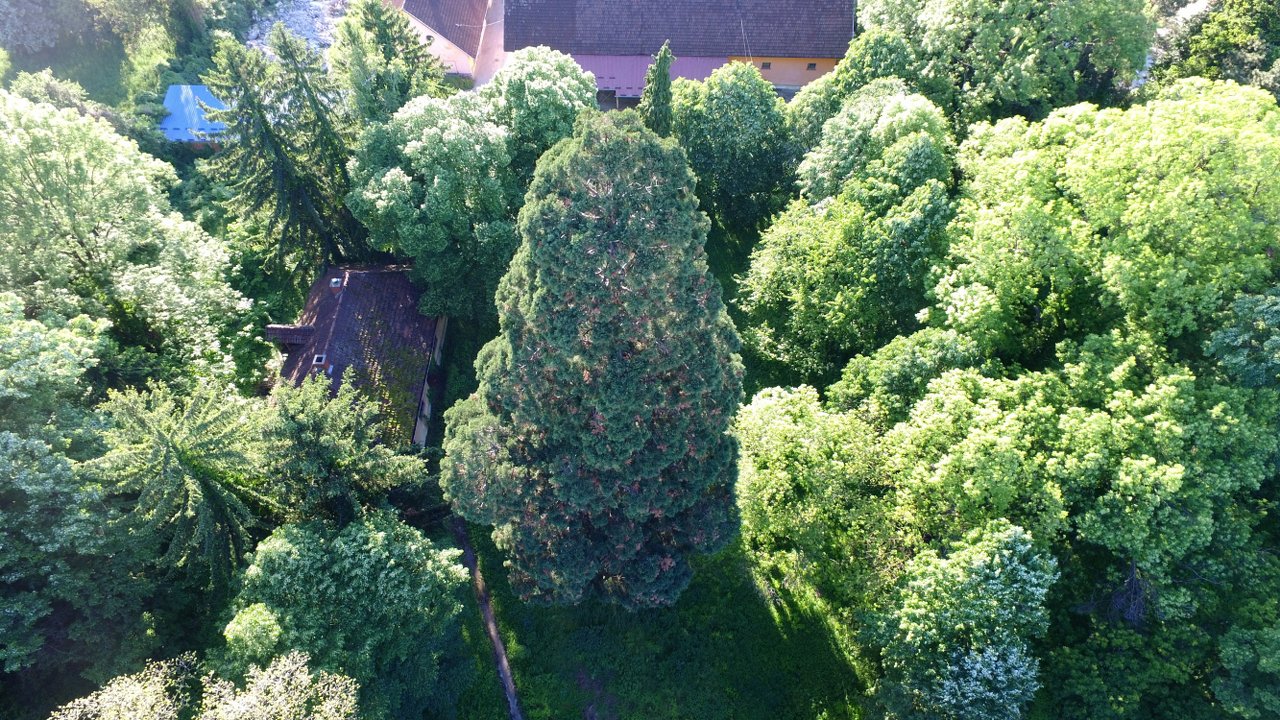 Slatina's nationally protected Giant Sequoia tree (Mamutovac) © Tourist Board of Slatina
Slatina's nationally protected Giant Sequoia tree (Mamutovac) © Tourist Board of Slatina
Of course, we can't really call it champagne – that title is reserved for a type of sparkling wine made in a distinct geographical region in France. But, there are great similarities between Slatina sparkling wine and champagne - similarities that do not exist exactly in other Croatian sparkling wines. Champagne is largely made from the Pinot Noir grape. The found bottle of Slatina sparkling wine was made from the Kadarka grape variety, which has been compared to Pinot Noir.
Both grape varieties are thin-skinned, delicate, easily susceptible to impairment and require a low yield to produce quality wines. Both are tricky to cultivate. For this reason, the Kadarka grape variety is now grown very rarely in Croatia, its place in vineyards taken by more hardy and some imported varietals. But, that wasn't always the case.
History of Slatina sparkling wine
In 1841, the German prince Georg Wilhelm Schaumburg-Lippe bought a property of land in the Slatina area from the Pejačević family. The land contained vineyards, orchards, agricultural fields and large forest areas, including the site of the new Slatina visitor centre where the bottle was discovered. Indeed, trees still line the road of Ulica kralj Zvonimir in the centre of Slatina – the cellar and restaurant of the town's famous Stari Podrum is just a few metres from Slatina's nationally protected Giant Sequoia tree (Mamutovac).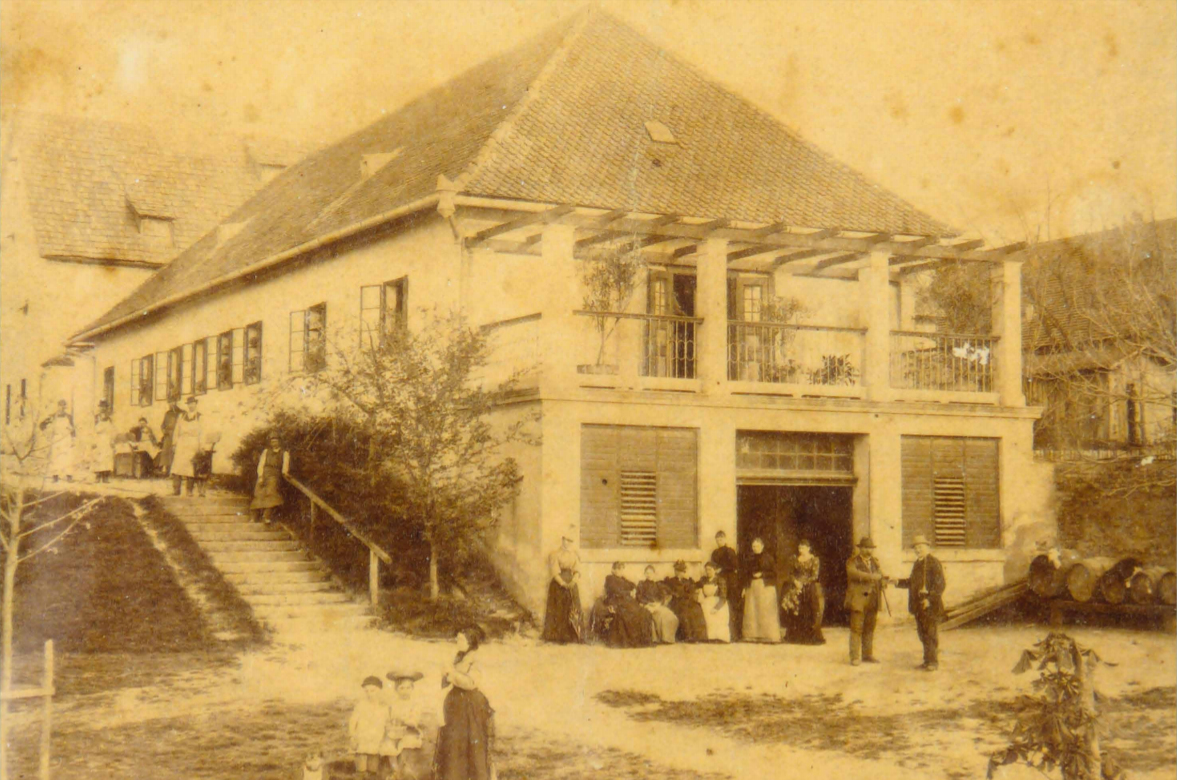 The Stari Podrum cellar, the site of the first-ever production of Croatian sparkling wine, at the beginning of the 20th century © Virovitica State Archives / Slatina Homeland Museum
The Stari Podrum cellar, the site of the first-ever production of Croatian sparkling wine, at the beginning of the 20th century © Virovitica State Archives / Slatina Homeland Museum
Slatina sparkling wine production started in 1864 at the Stari Podrum cellar, using the Kadarka grape variety. Perhaps it was the notorious difficulties of the growing the grape which resulted in slow initial progress for the production, but the enterprise got a massive boost in 1866 with the arrival of a new manager, Otto Rockhror. He rearranged the cellar and production, brought in new equipment and invested in marketing their Slatina sparkling wine. It worked.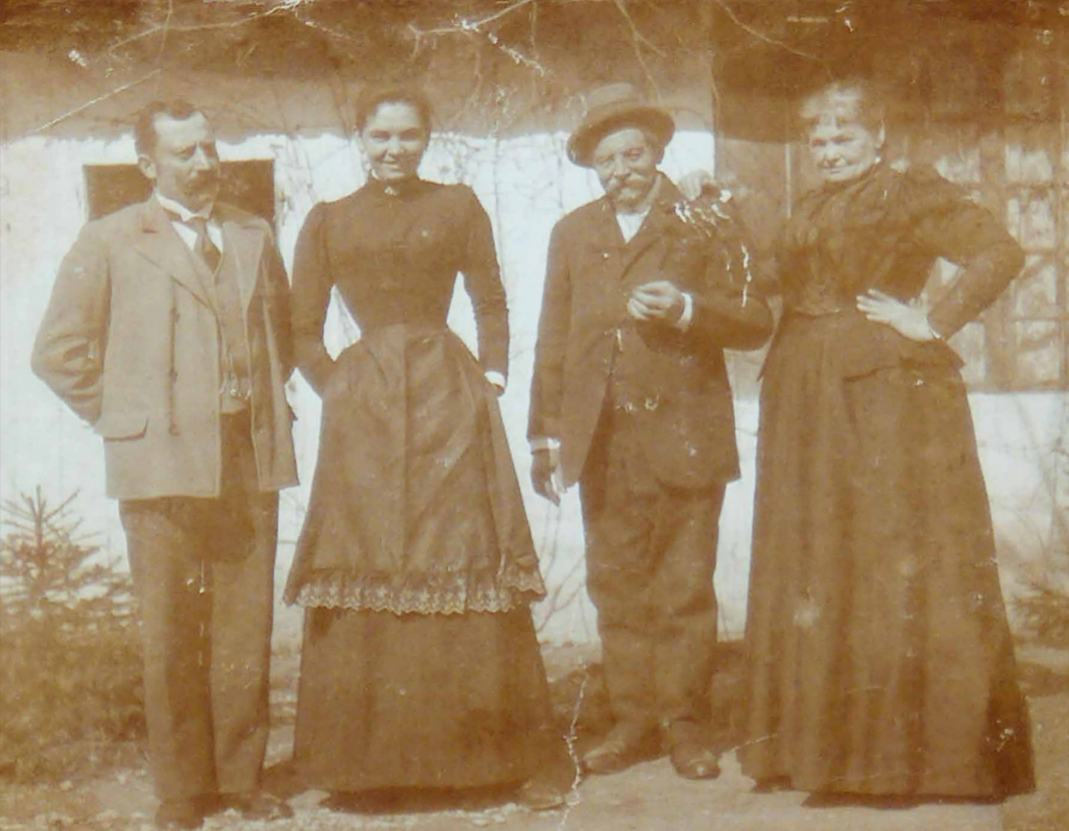 Left to right - Ljudevit Konstantinović, his wife Marija Konstantinović (the daughter of Otto Rockrohr), Otto Rockrohr and his wife Josefina Rockrohr © Virovitica State Archives / Slatina Homeland Museum
Left to right - Ljudevit Konstantinović, his wife Marija Konstantinović (the daughter of Otto Rockrohr), Otto Rockrohr and his wife Josefina Rockrohr © Virovitica State Archives / Slatina Homeland Museum
The quality of Slatina sparkling wine was recognized at the great Economic and Forestry Jubilee Exhibition in Zagreb in 1881 when Georg Wilhelm Schaumburg-Lippe received an honorary diploma and a large medal for domestic sparkling wine and fine wine. The credit perhaps lay elsewhere, considering it was the efforts of Otto Rockhror that were no doubt the cause, but, such were the times. However, Otto Rockhror's achievements with Slatina sparkling wine certainly did not go unnoticed.
At the Science and Industry Fair in Brussels, Belgium, in 1888, Otto Rockhror was awarded a bronze medal featuring the image of Leopold I. He received a further bronze medal with the image of Francis Joseph I in 1890 at the Agricultural and Forestry Exhibition in Vienna and was awarded a silver medal with the image of Franz Ferdinand in 1894 in Vienna by the Association for the Promotion of Agricultural Knowledge. These medals are on display in the Slatina Homeland Museum, donated by Otto Rockhror's great-granddaughter Jasna Nosso. They sit alongside a wooden barrel used in the production of Slatina sparkling wine from 1885 and, now, the latest testament to the history of Croatia's oldest sparkling wine production, the newly discovered bottle, which has been transferred to the museum for preservation, safekeeping and dating.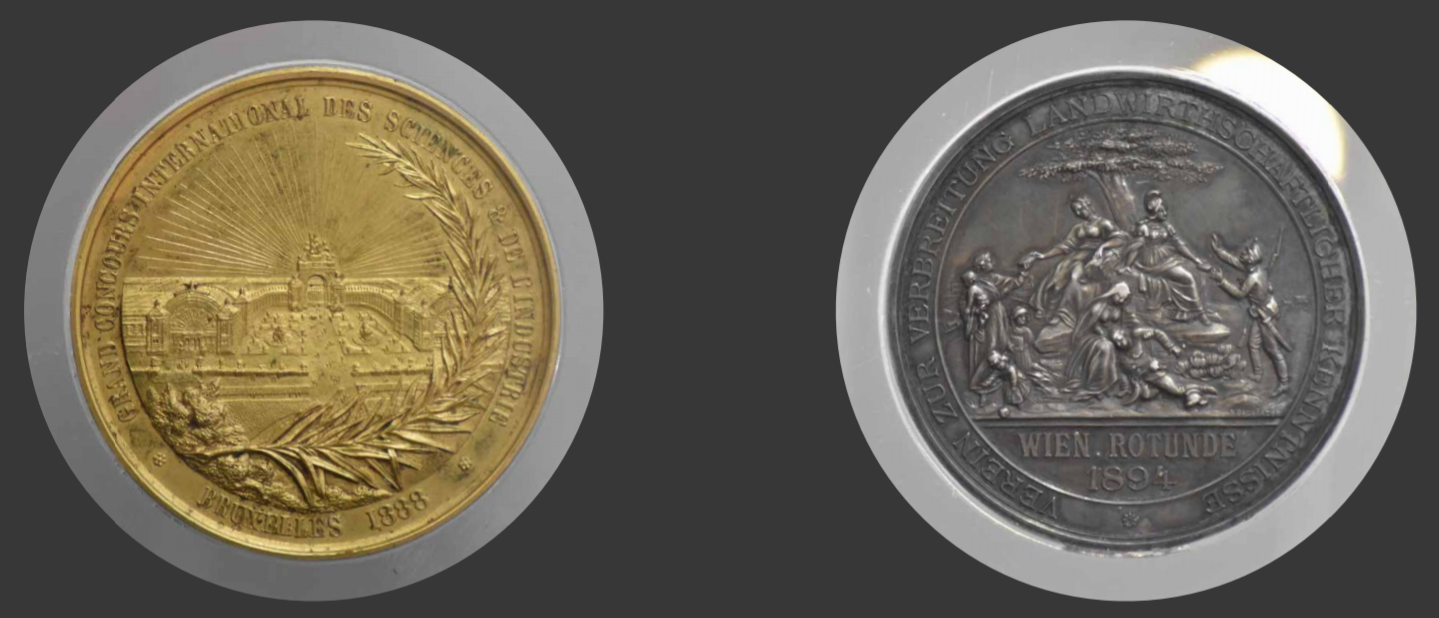 On the left, the bronze medal won by Otto Rockhror at the Science and Industry Fair in Brussels, Belgium, in 1888. On the right, the silver medal with the image of Franz Ferdinand he was awarded in 1894 in Vienna © Virovitica State Archives / Slatina Homeland Museum
On the left, the bronze medal won by Otto Rockhror at the Science and Industry Fair in Brussels, Belgium, in 1888. On the right, the silver medal with the image of Franz Ferdinand he was awarded in 1894 in Vienna © Virovitica State Archives / Slatina Homeland Museum
The production of Slatina sparkling wine from the Kadarka grape did not survive the loss of Stari Podrum cellar manager Otto Rockhror, who died in 1909. Thereafter, ownership of the enterprise was taken over by Count Drašković but, by 1912, production of Slatina sparkling wine had ceased completely and all the production equipment was moved to Hungary. Though the growing of the Kadarka grape variety almost completely died out in Croatia after this, it remains an important part of wine production in Hungary, Bulgaria, Romania and Serbia, where it is grown in Vojvodina, a landscape near-identical to that of Slavonia (indeed, though the heritage of the Kadarka grape is mysterious, the latest opinion is that it is a cross between the Turkish variety Papazkarasi and the Serbian variety Skadarsko and travelled to Pannonia with Serbs who fled north from the Ottomans).
However, the story of Slatina sparkling wine has not only been revived with the discovery of this old bottle. The Stari Podrum cellar still stands in the centre of Slatina today and vineyards still surround the town. The cellar and its wine production were bought by winemaker Ivan Halas over recent years and he has returned the production of Slatina sparkling wine to the historic birthplace of 'Slavonia champagne'. He has since received several awards for his efforts.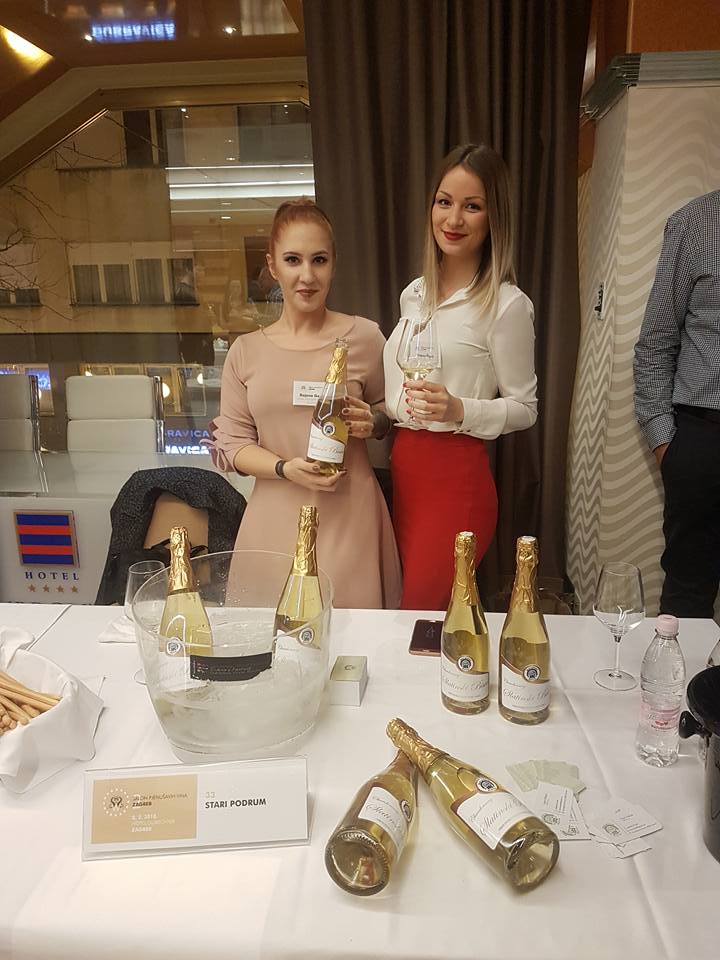 Slatina sparkling wine, revived by Ivan Halas at Stari Podrum, being presented at the 2nd Sparkling Wine Salon at the Hotel Dubrovnik in Zagreb © Tourist Board of Slatina
Slatina sparkling wine, revived by Ivan Halas at Stari Podrum, being presented at the 2nd Sparkling Wine Salon at the Hotel Dubrovnik in Zagreb © Tourist Board of Slatina
“As the Stari Podrum winery does not have adequate conditions for storing the found bottle, we took it to the Homeland Museum in Slatina where it will be stored,” Mr Halas told local news, upon the discovery of the bottle. “Only one bottle was found (so far), although there may be more. It is currently the only fully preserved one in the Slatina area. For now, we assume that it is from the period between 1864 and 1912 - we have no knowledge of the exact year, but the age of the bottle will be determined by experts.”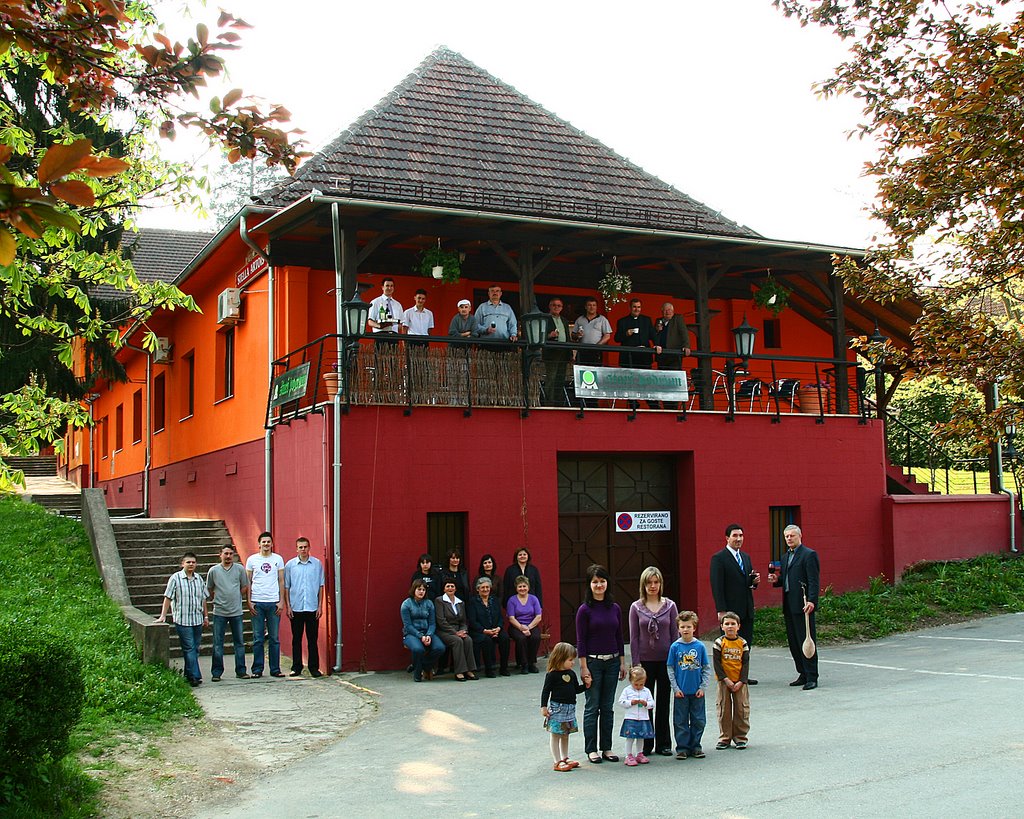 A more contemporary photo of the Stari Podrum enterprise in Slatina © Virovitica State Archives / Slatina Homeland Museum
A more contemporary photo of the Stari Podrum enterprise in Slatina © Virovitica State Archives / Slatina Homeland Museum
DIY Smart Bench: How 3 High School Students Built an Invention from Scratch
Croatia is set to become a smart bench superpower if things continue to develop at this rate - a story of innovative students from Slatina on May 1, 2018


